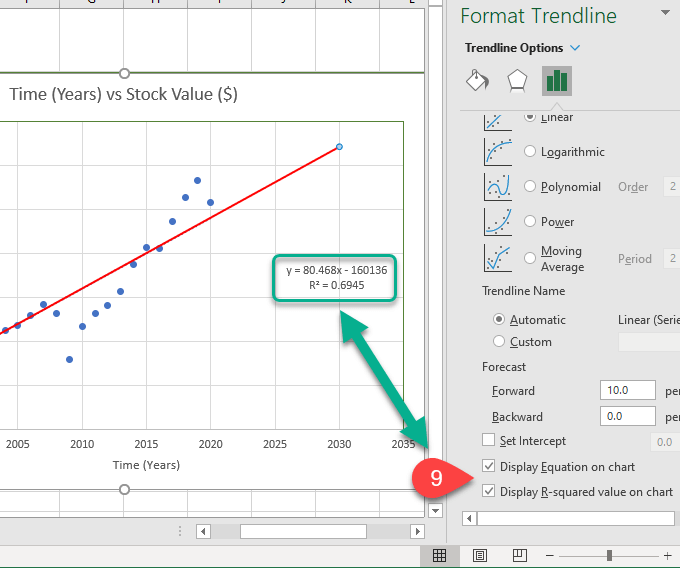

Then, select any cell of the excel and use the following formula.To begin with, use the dataset and make a scatter chart as described in the first method.So, to learn to use this function follow the steps below: We can also find the slope of the trendline in Excel with the use of the SLOPE Function. Calculating Slope of Trendline with SLOPE Function Read More: How to Add Trendline Equation in Excel (With Easy Steps)Ģ. If we compare these two equations together then we can see that the slope of the is, m=1. In this case, we have found the equation like y = x-25. It is very important to note that the linear relationship equation is y=mx+c.Finally, you will get the result in the image below.Moreover, you can select the Display Equation on Chart option to show the graph equation on the display screen.Then, you can select the Linear option to show the relationship.After that, the Format Trendline tab will open on the right side of the window.If this directly does not work, then select the Trendline option and go to More Options.Afterward, click on the Trendline option and select the Linear option to show the linear relation between the graph axes.Next, select the graph and click on the Chart Elements option.After that, you will get a graph like the below image.Thirdly, from Recommended Charts, choose a proper Scatter Chart.For that we will gonna use the dataset described above and follow the steps below: In this case, our goal is to find the slope of the trendline in Excel by using the trendline option.

We will use this dataset for our desired two methods as described below.ġ. For instance, we have an independent variable in Column C marked as X and a dependent variable in Column B marked as Y. To understand easily, we’ll use a sample dataset as an example in Excel. Notice the pattern in the two preceding sets of formulas.2 Easy Methods to Find Slope of Trendline in Excel Logarithmic Trendline Equation: y = (c \* LN(x)) - bĬ: =EXP(INDEX(LINEST(LN(y),LN(x),),1,2))Įxponential Trendline Equation: y = c \*e ^(b \* x)Ģnd Order Polynomial Trendline Equation: y = (c2 \* x^2) + (c1 \* x ^1) + bģrd Order Polynomial Trendline Equation: y = (c3 \* x^3) + (c2 \* x^2) + (c1 \* x^1) + b Linear Trendline Equation: y = m \* x + b These equations assume that your sheet has two named ranges: x and y. You can then use these formulas to calculate predicted y values for give values of x. This tip describes how to create formulas that generate the trendline coefficients.


When you add a trendline to a chart, Excel provides an option to display the trendline equation in the chart.


 0 kommentar(er)
0 kommentar(er)
